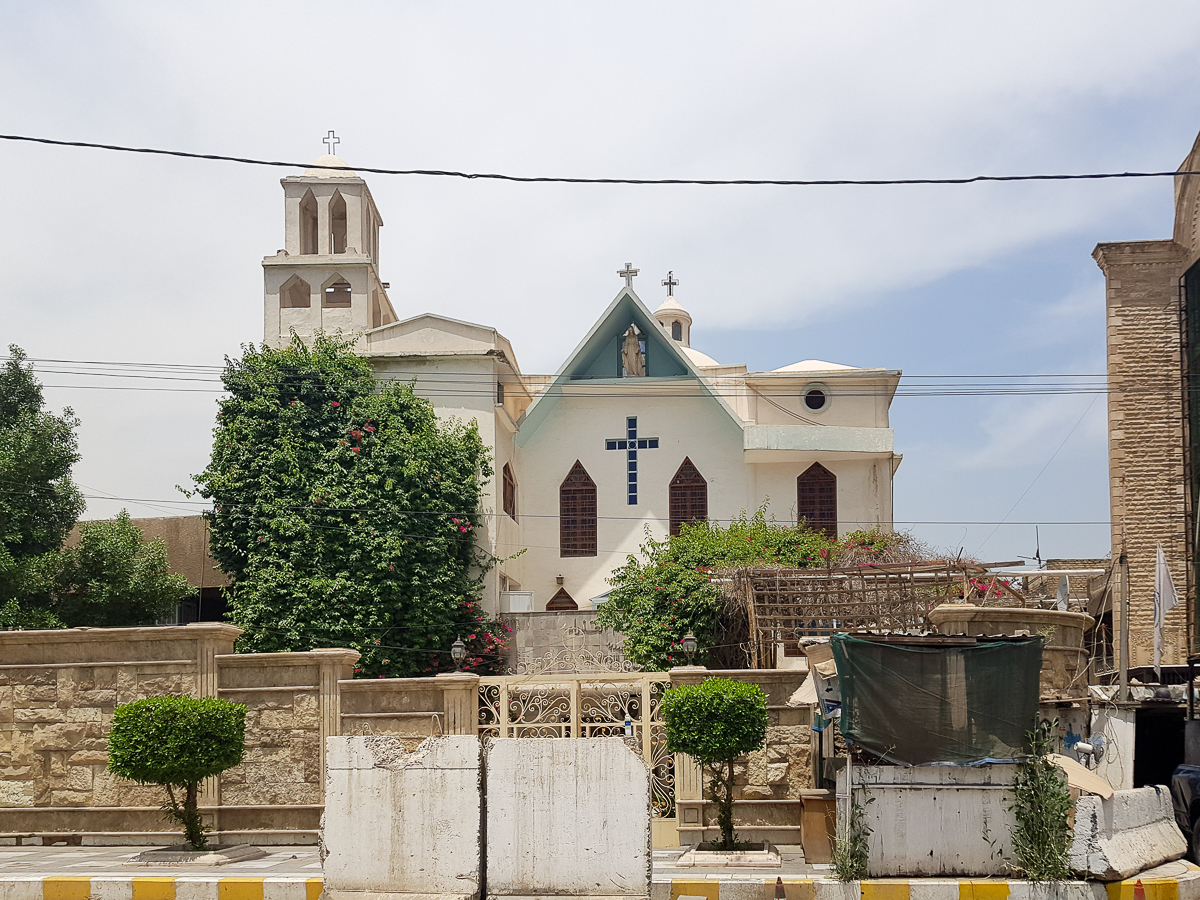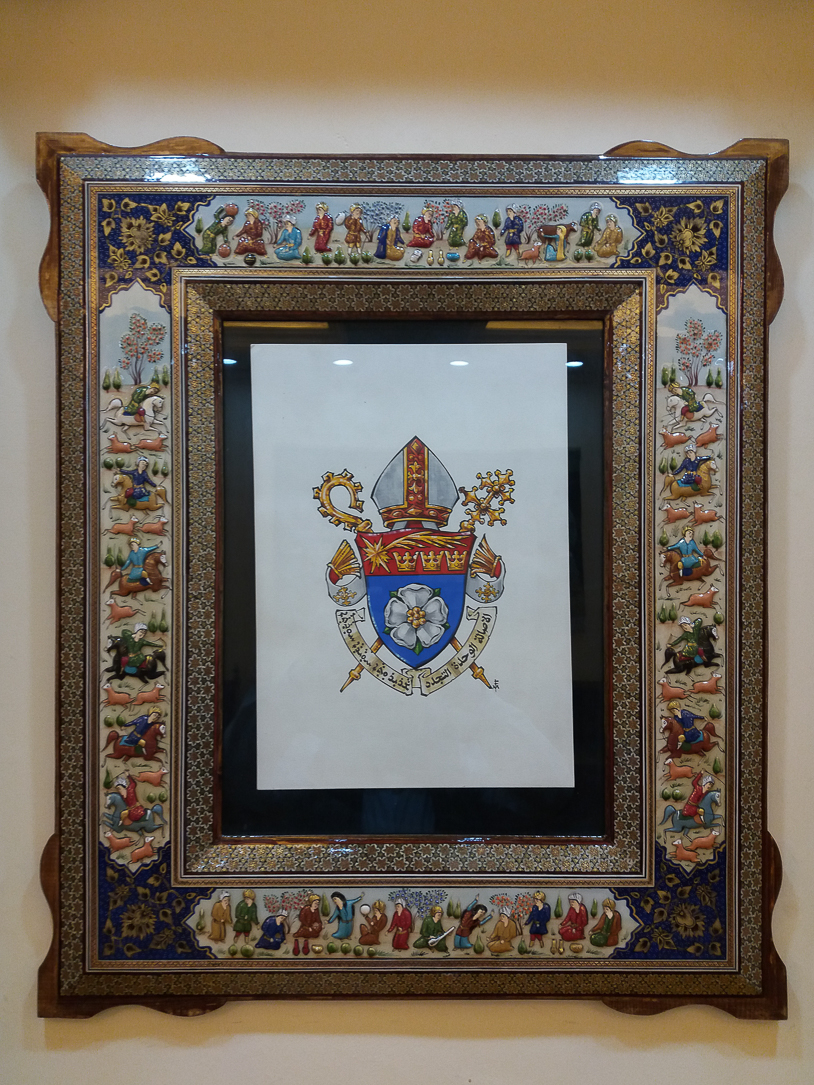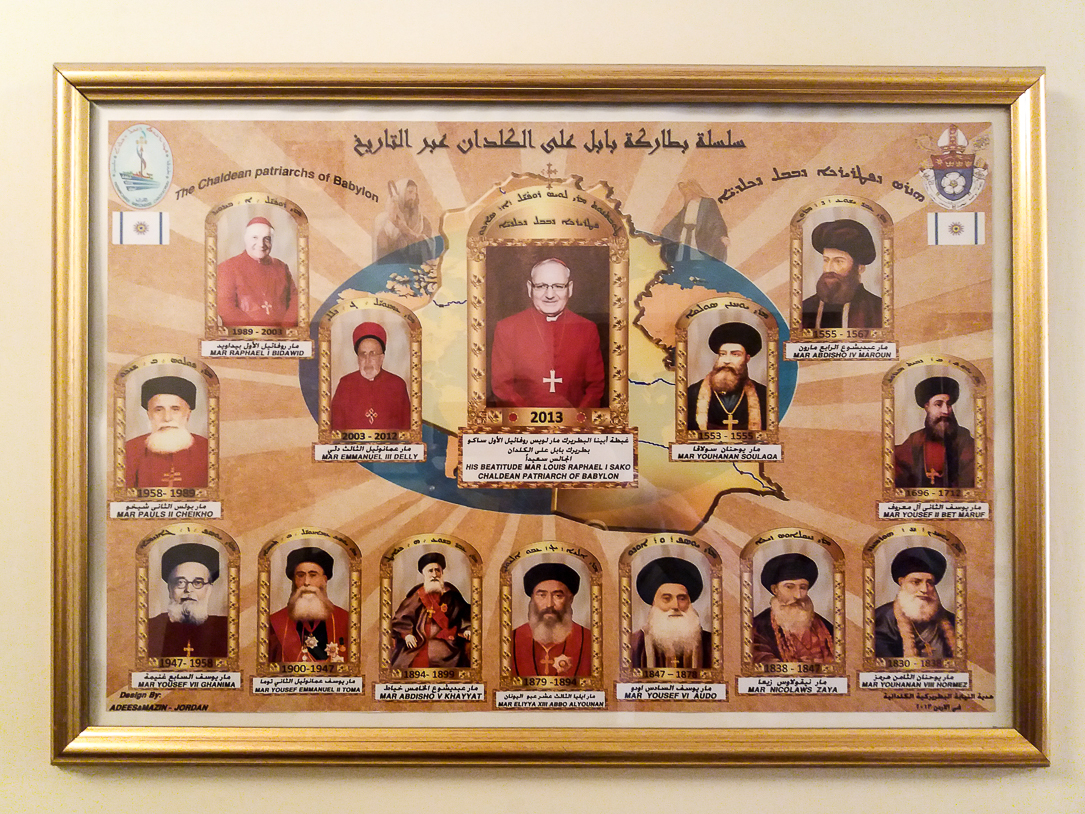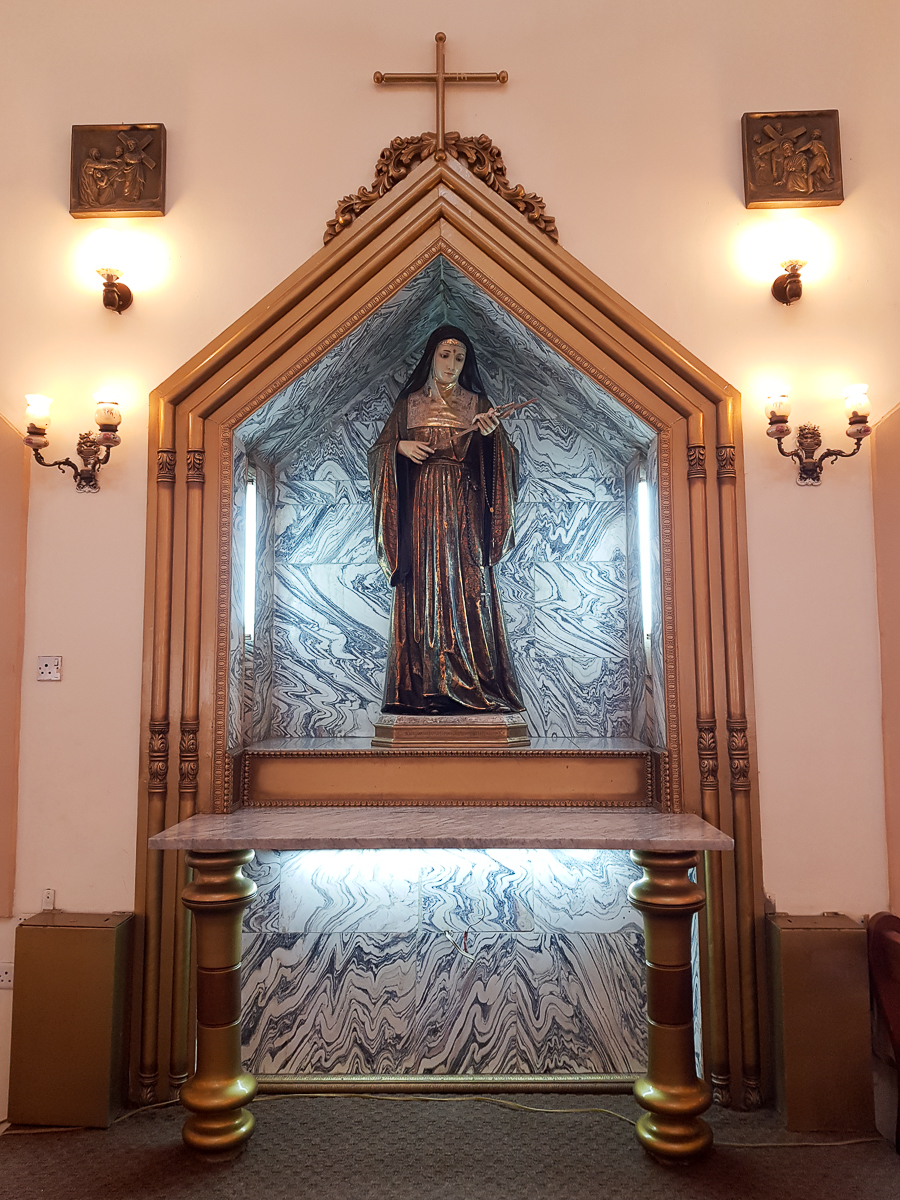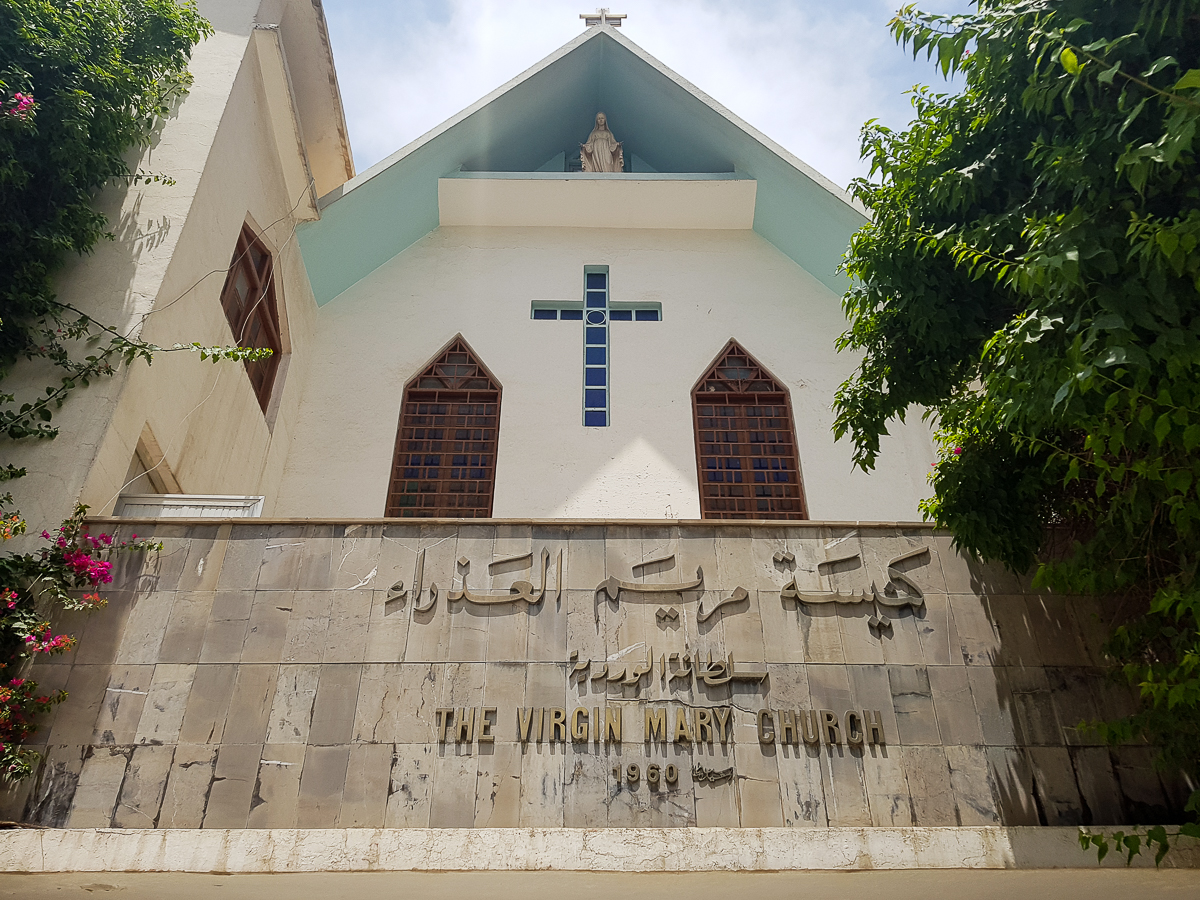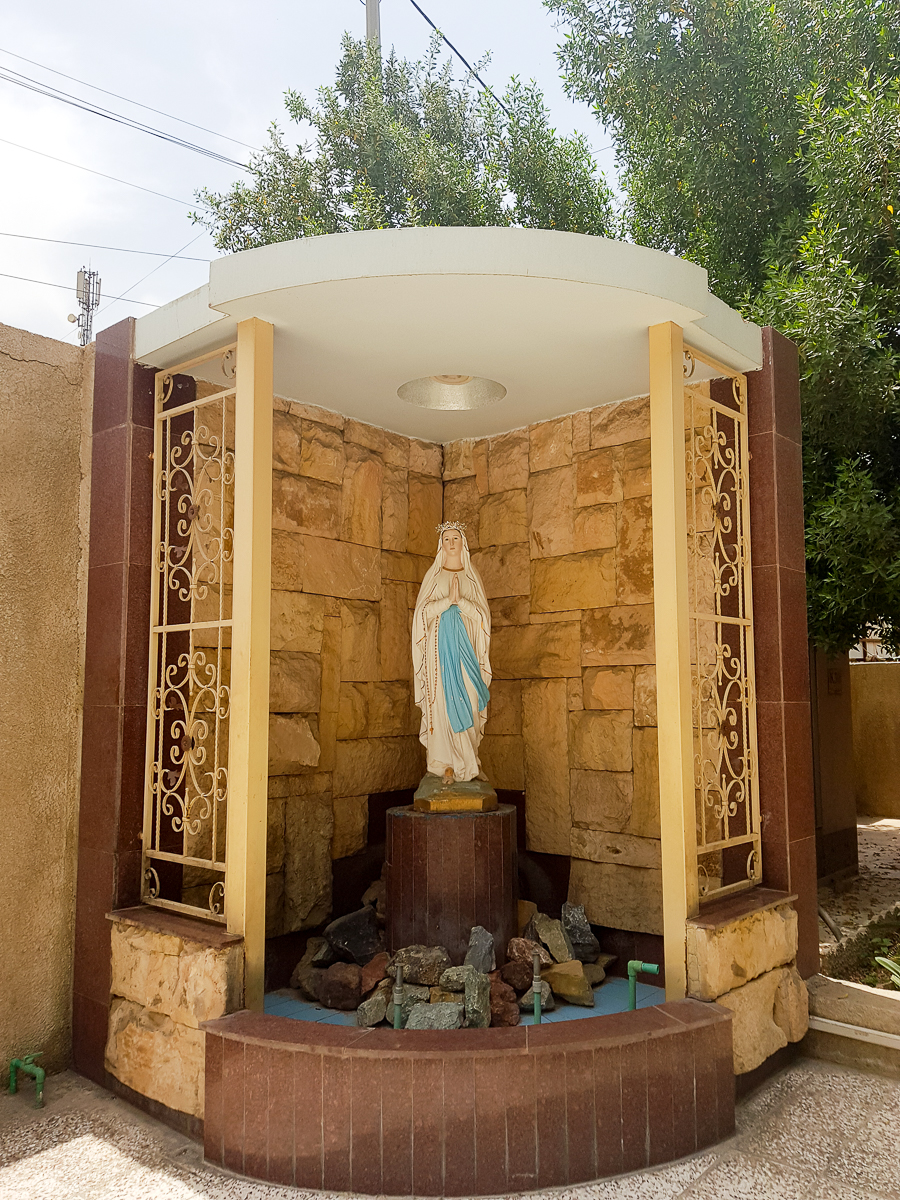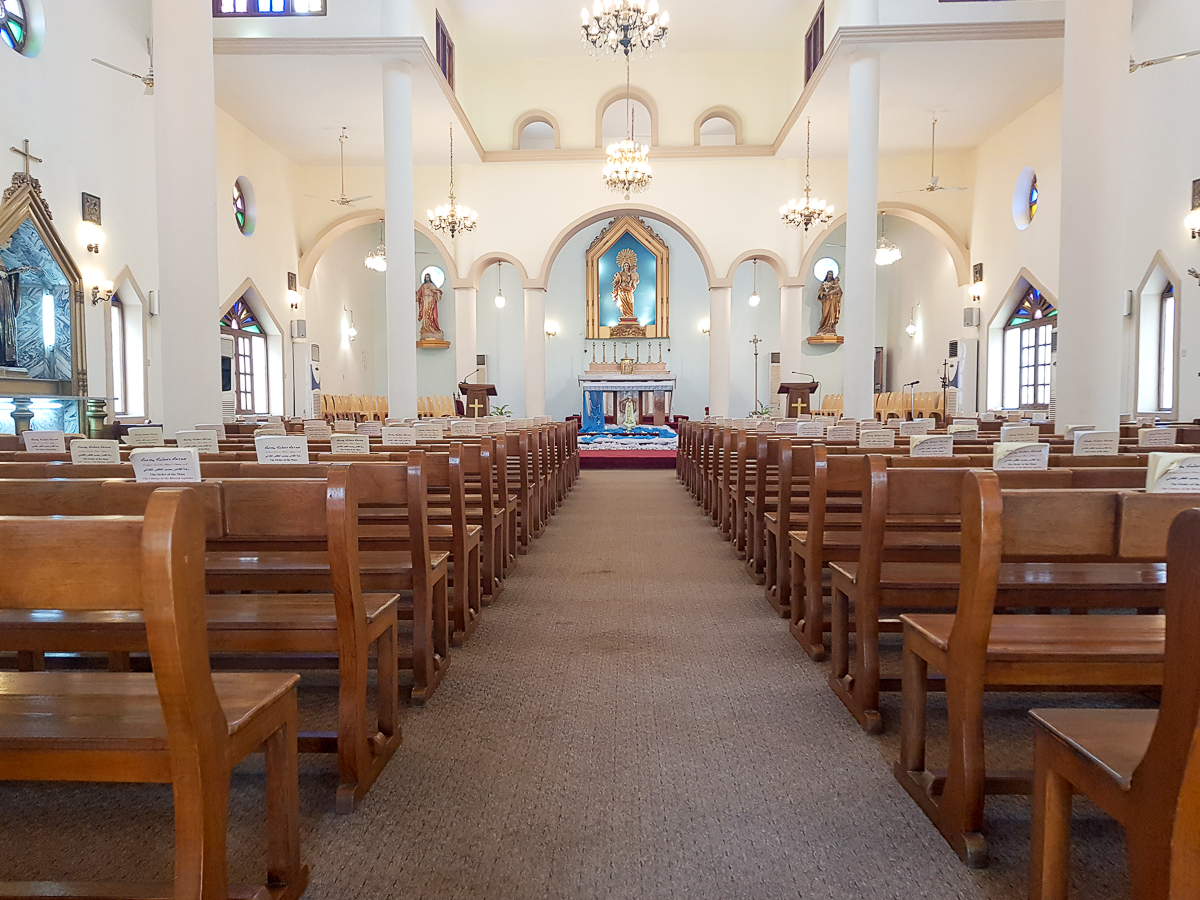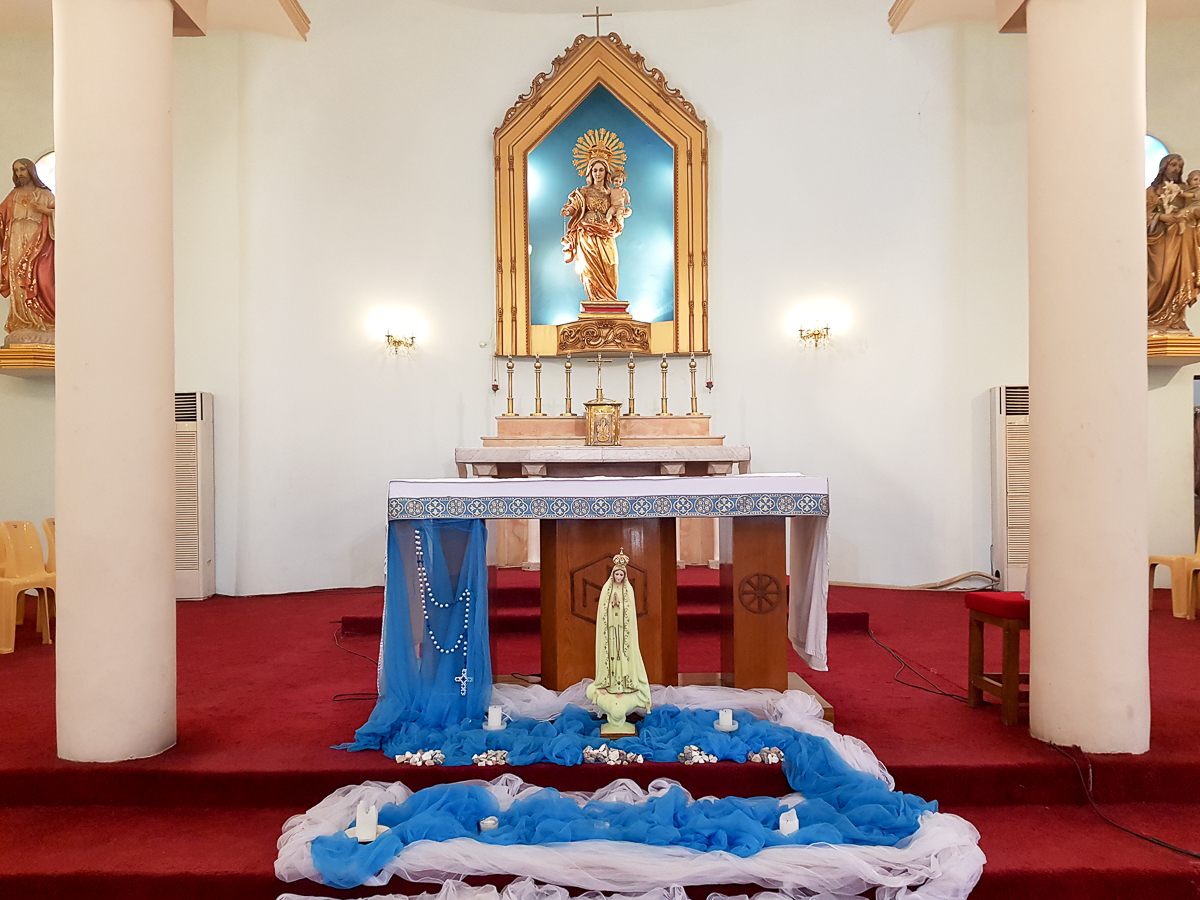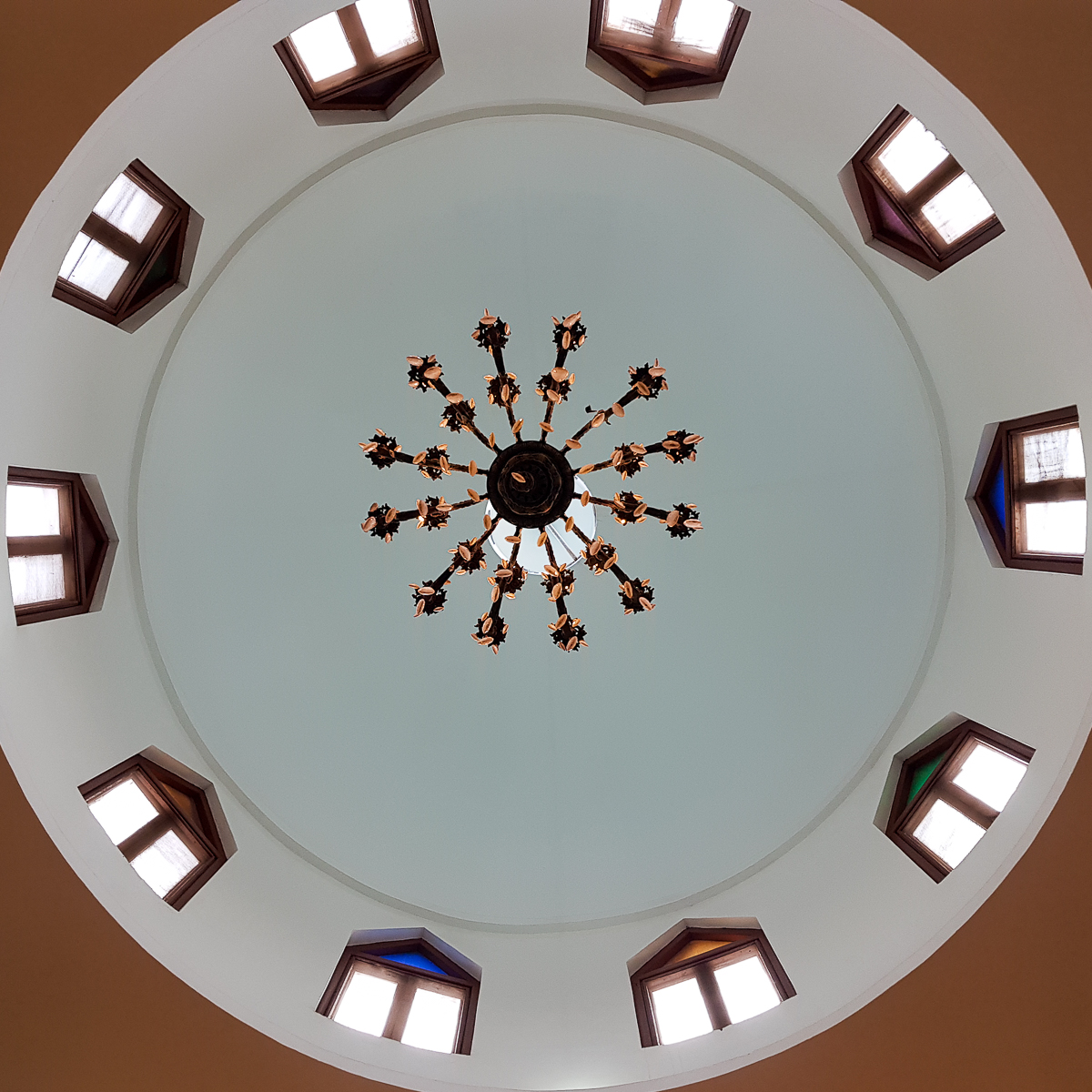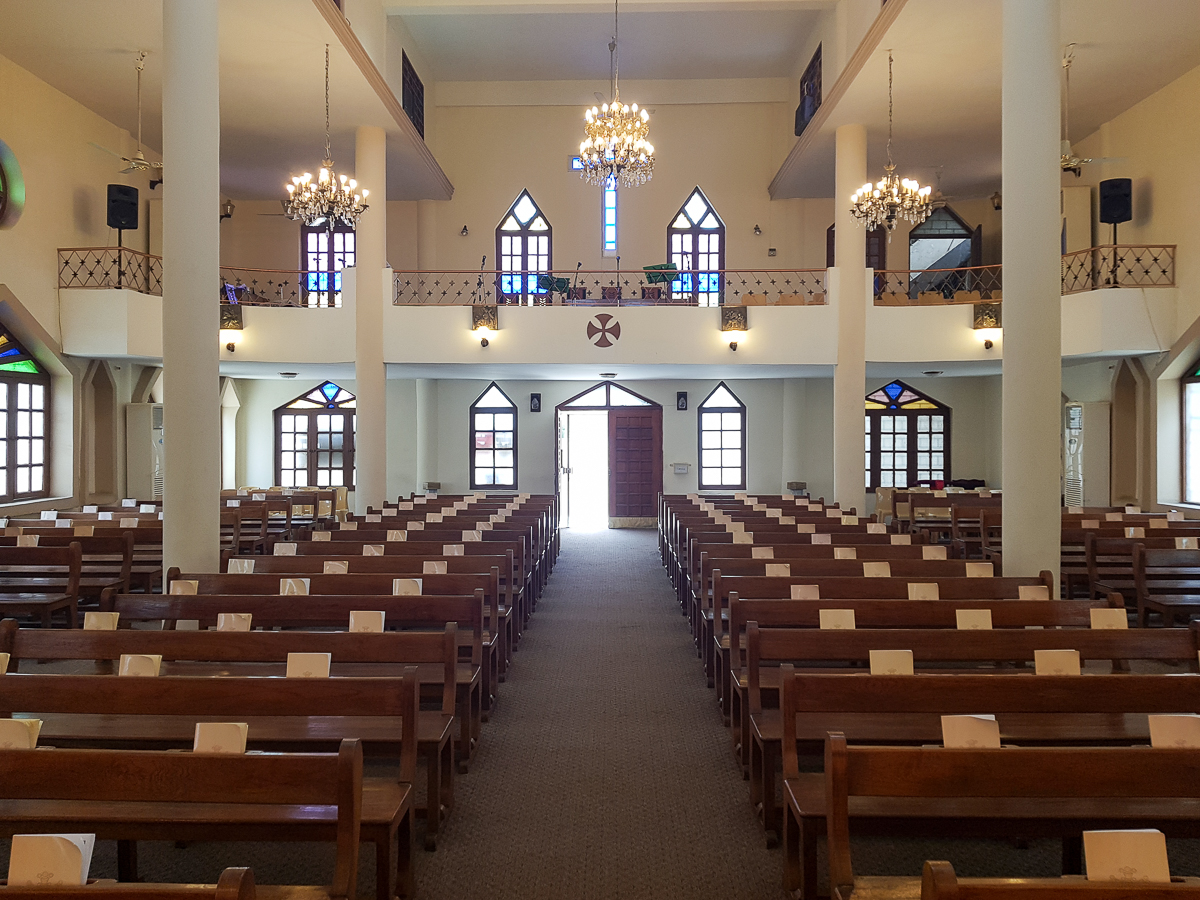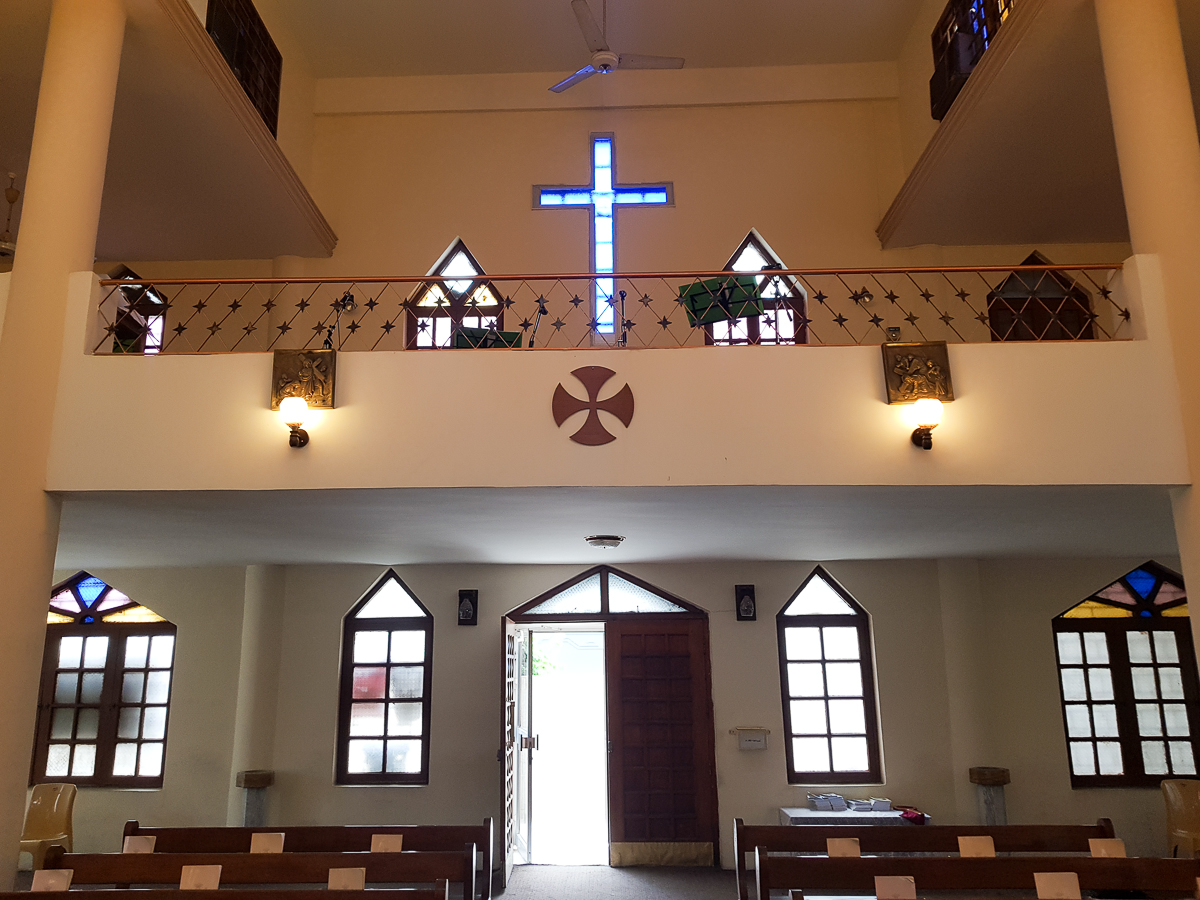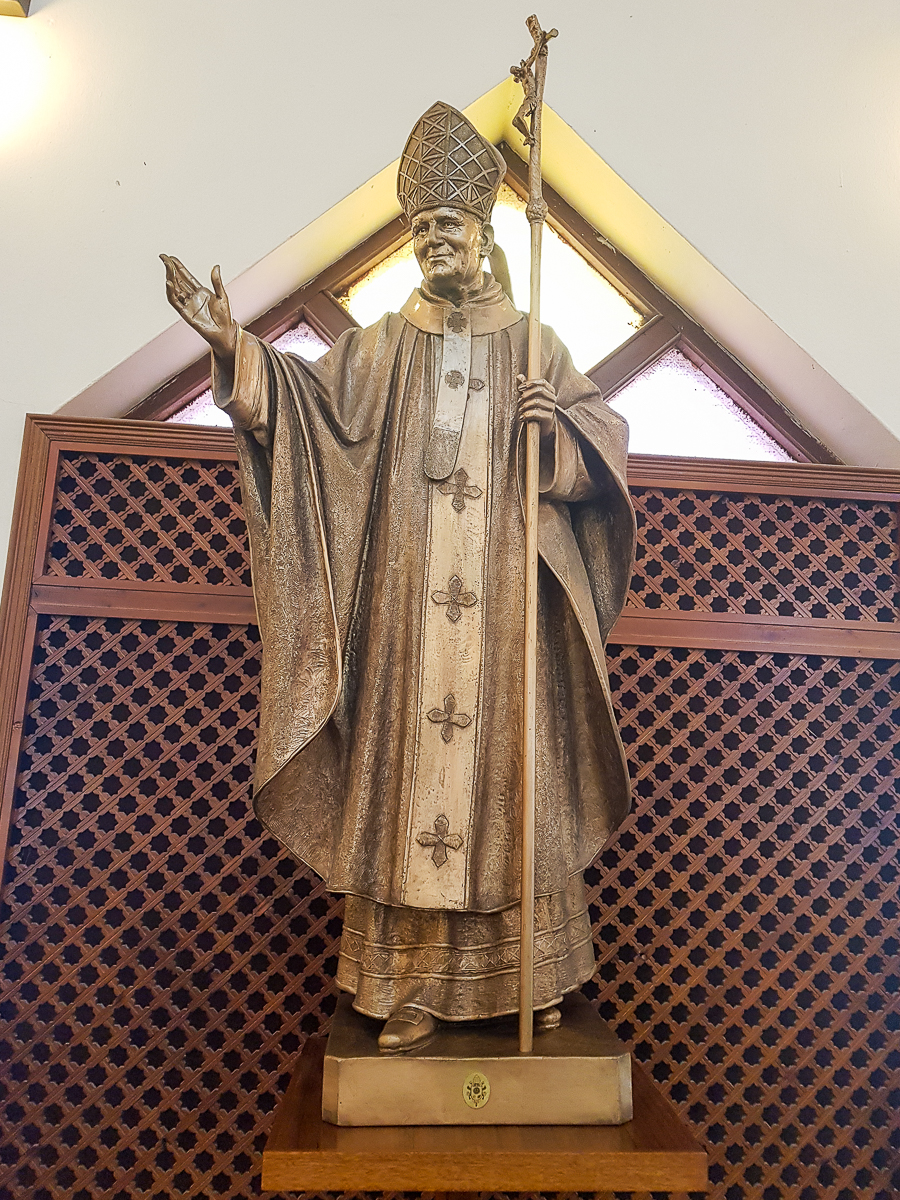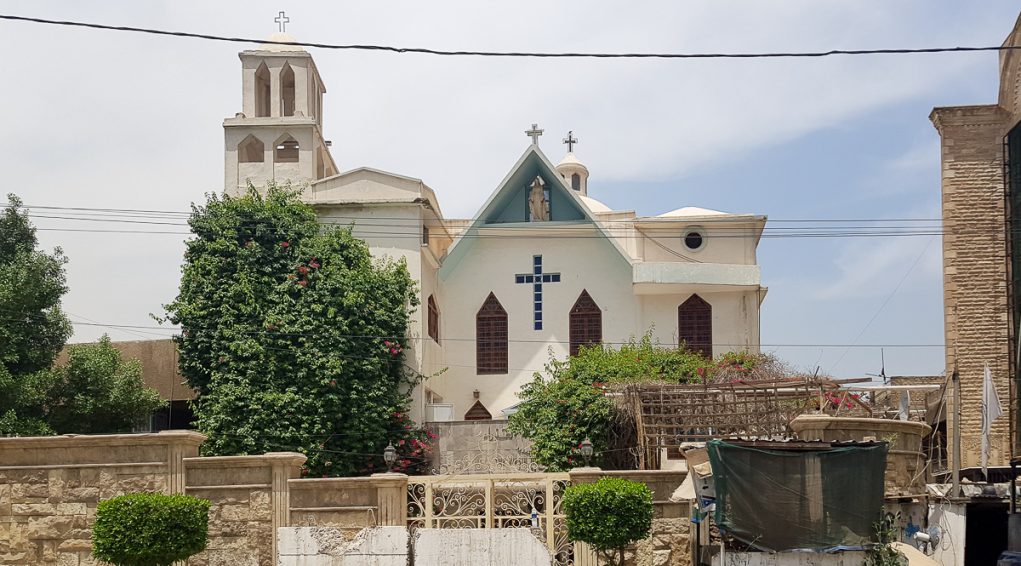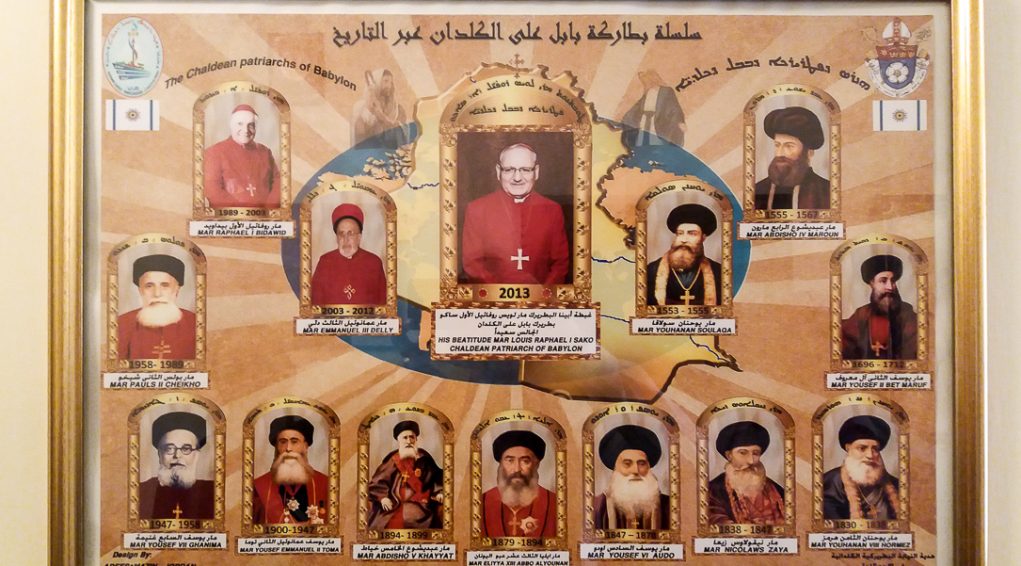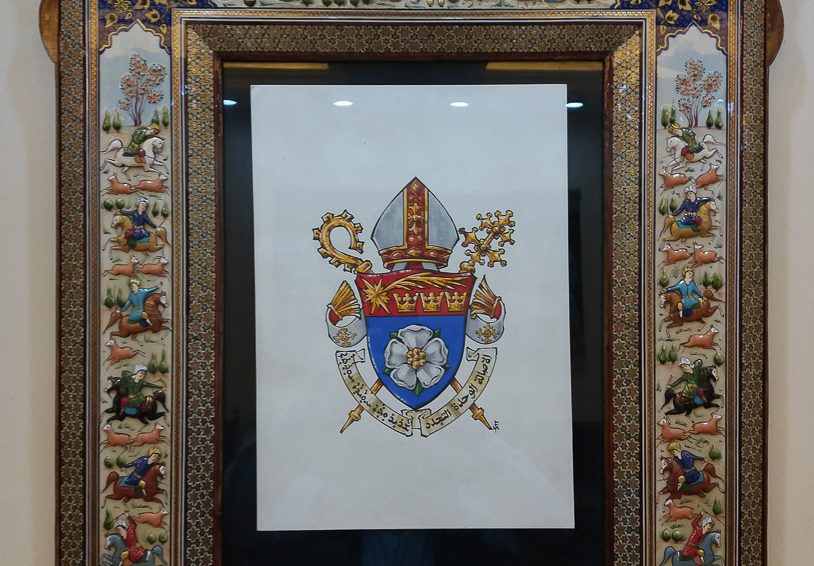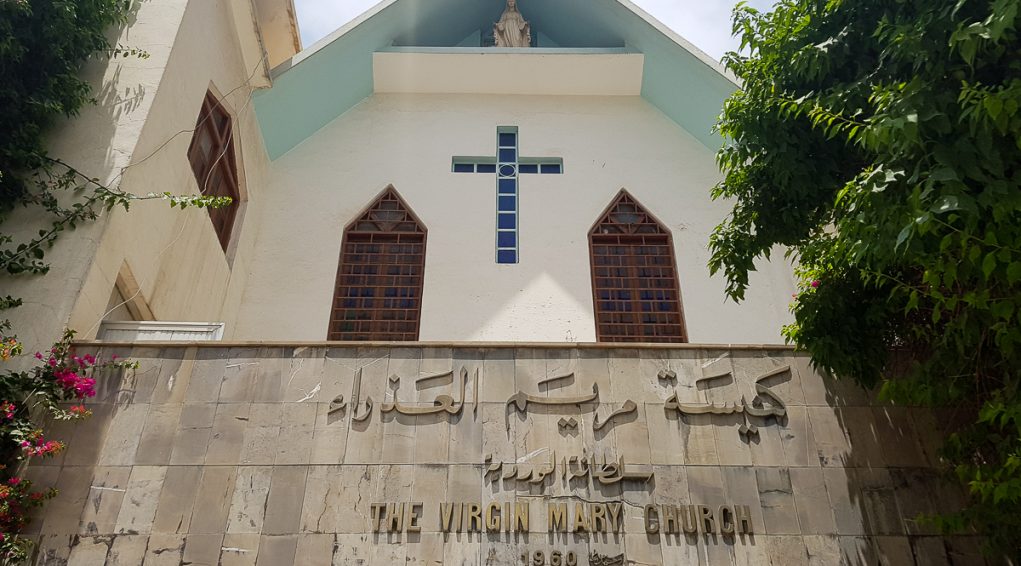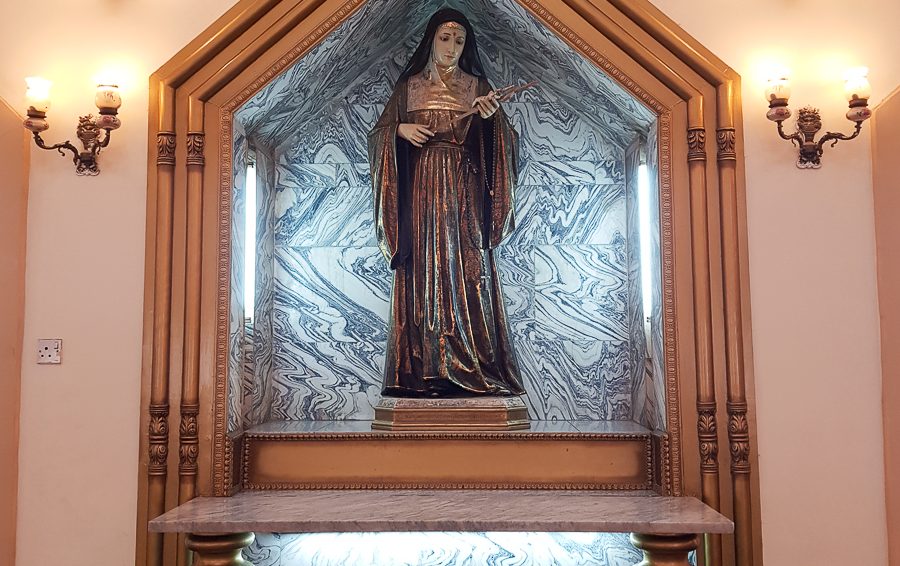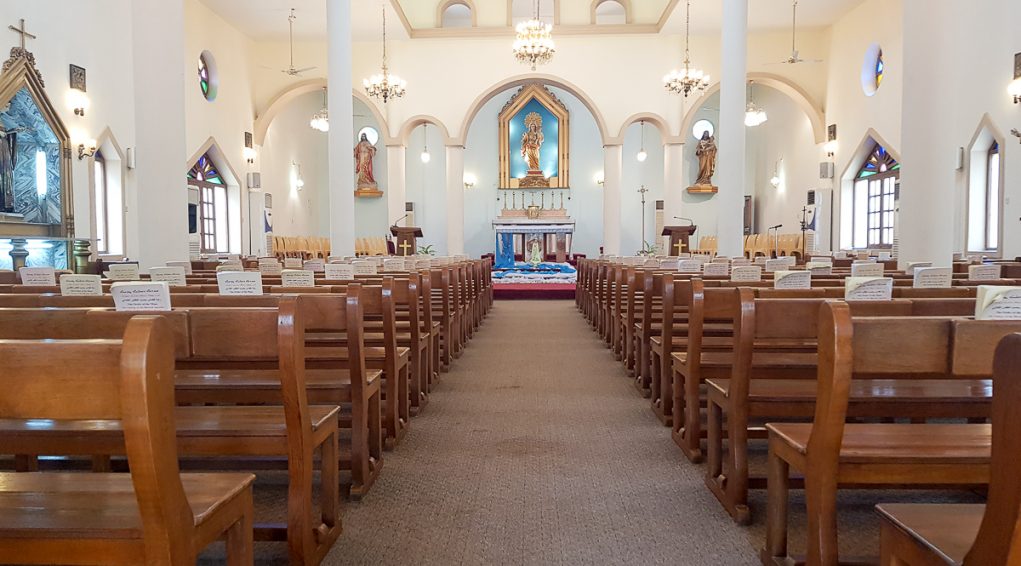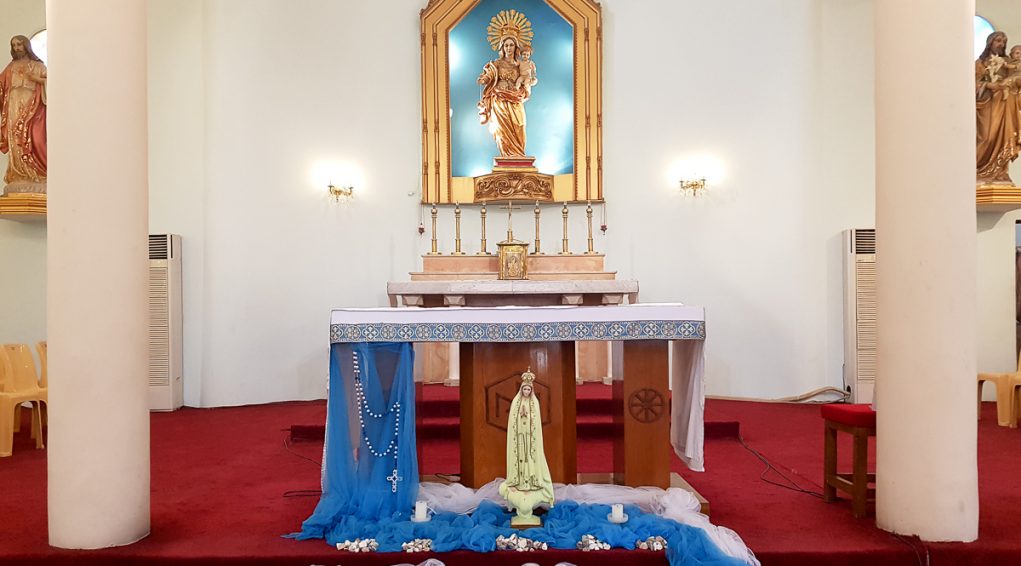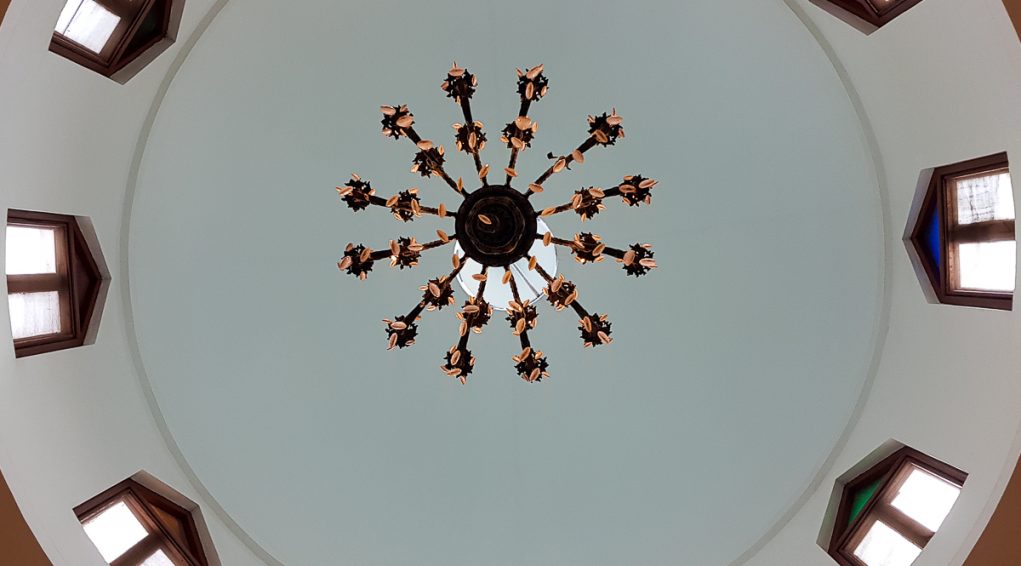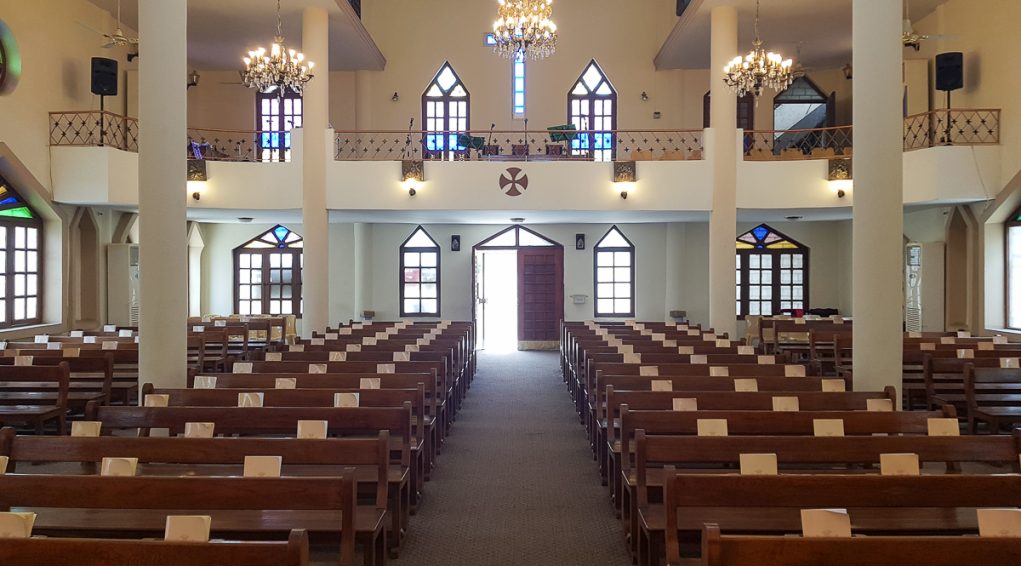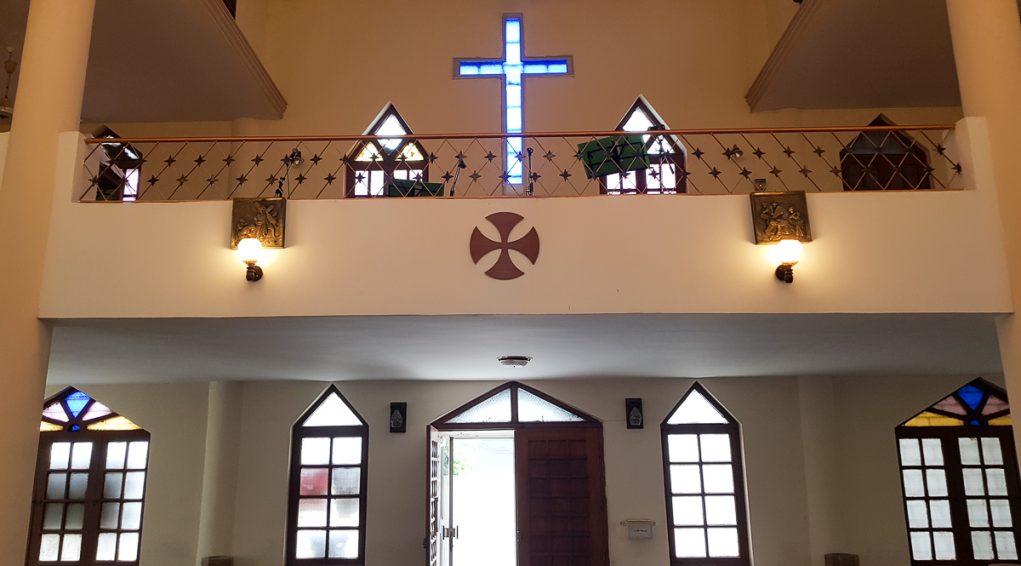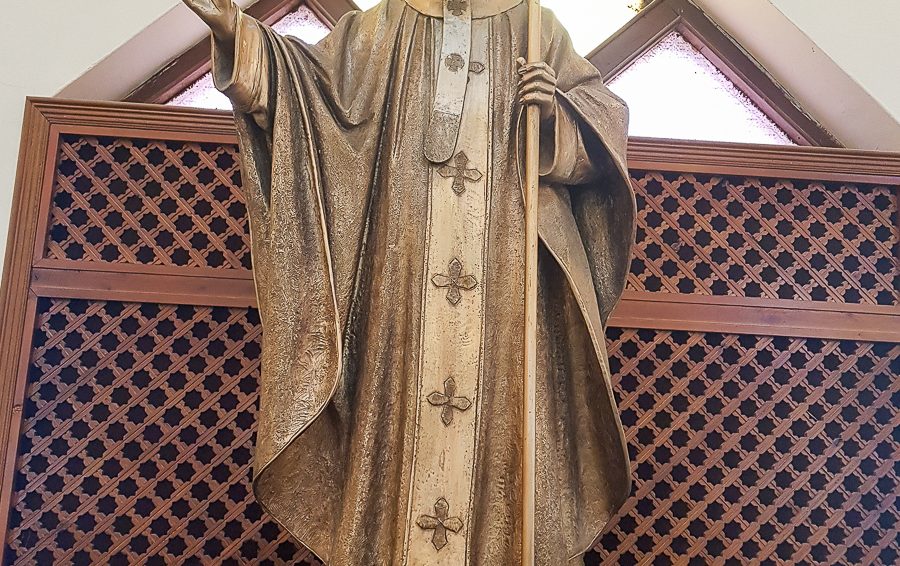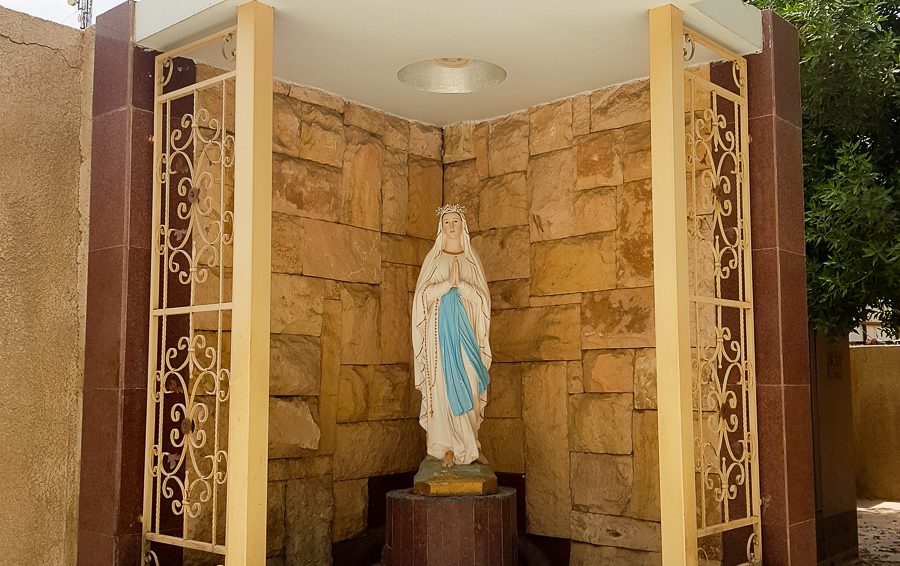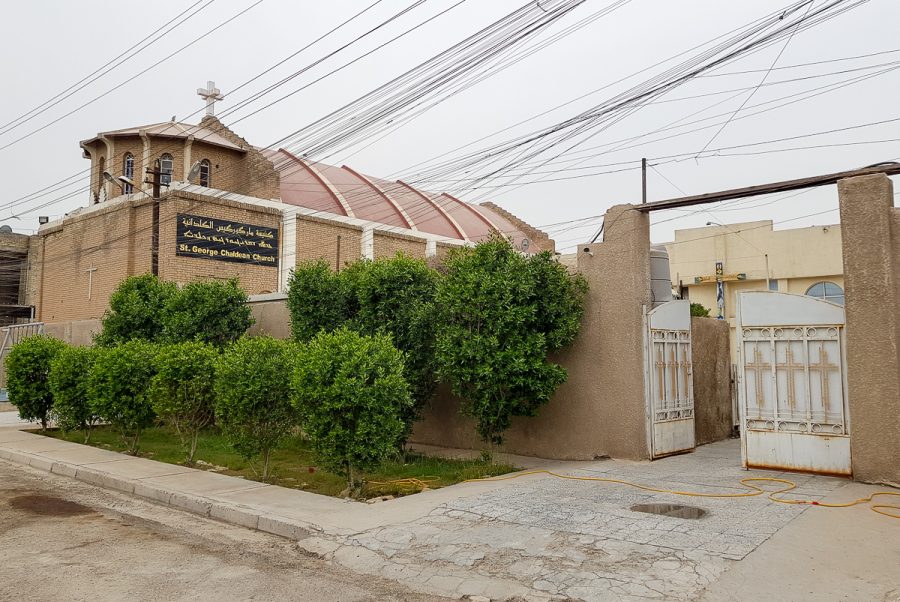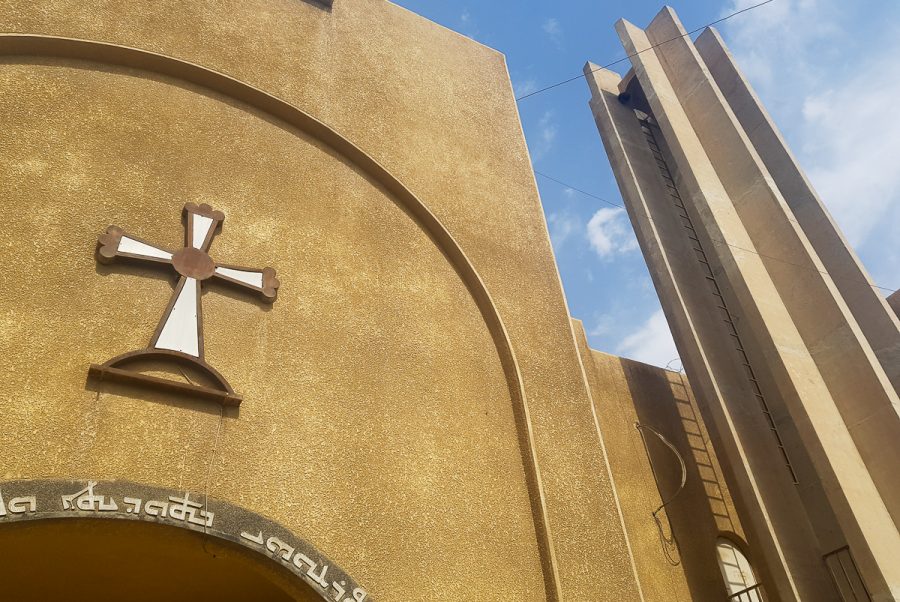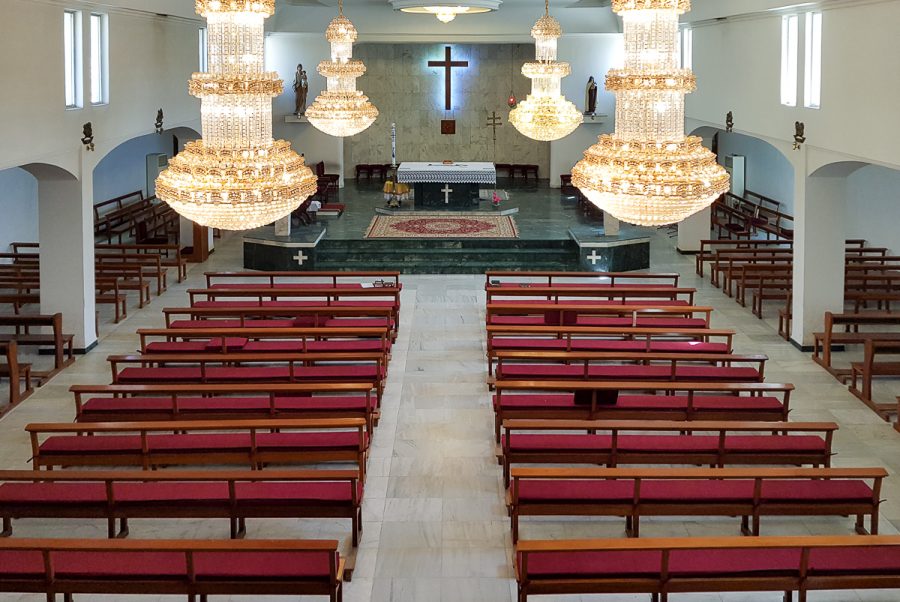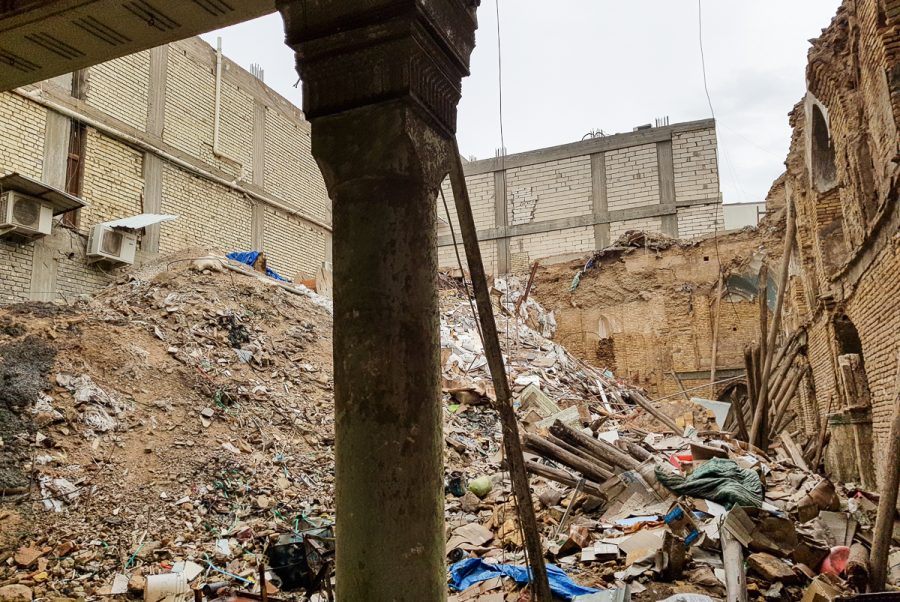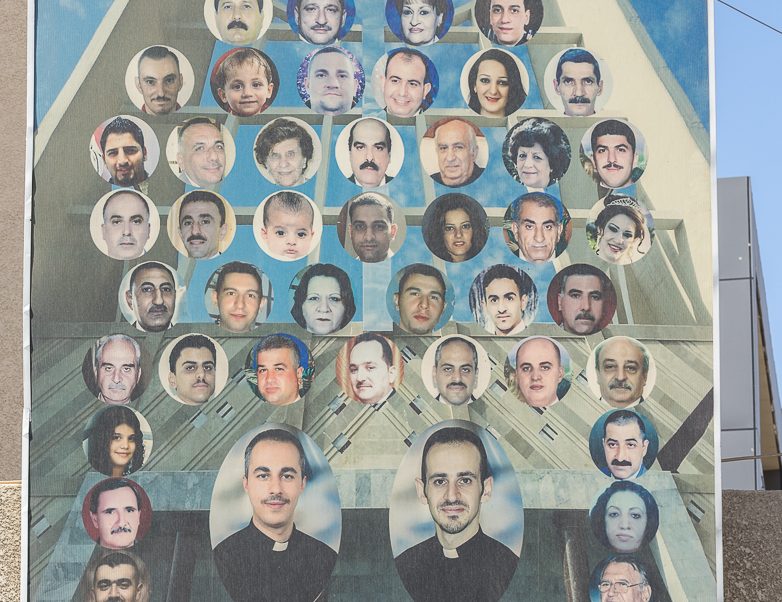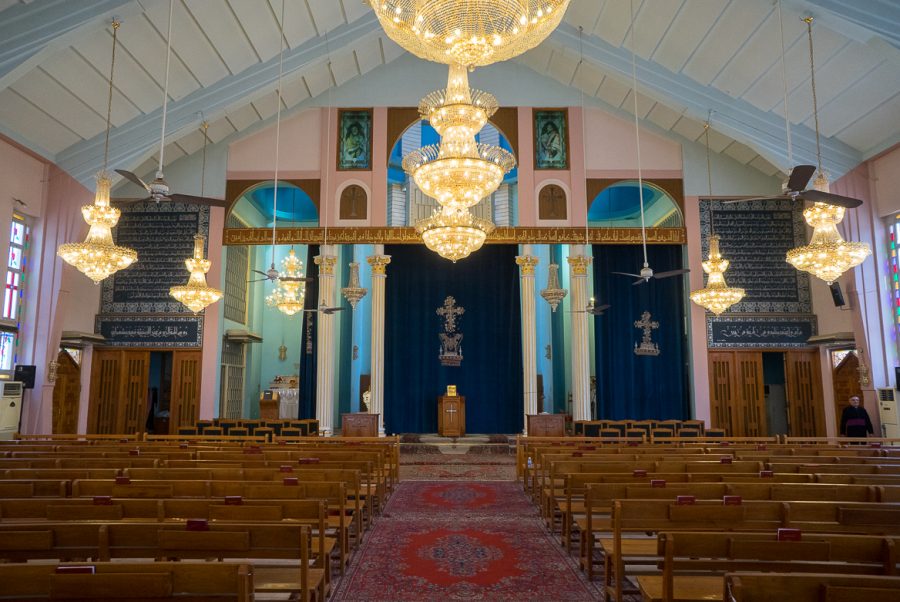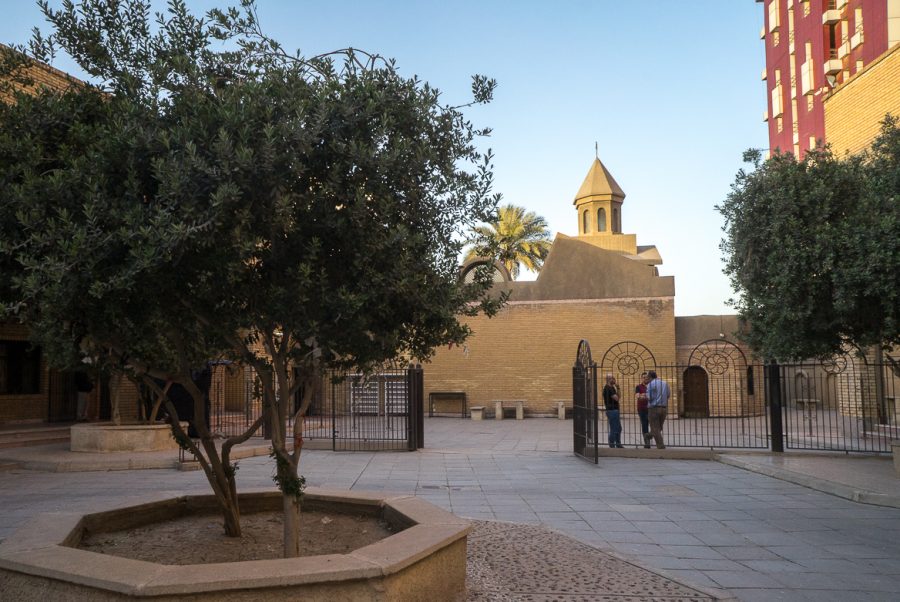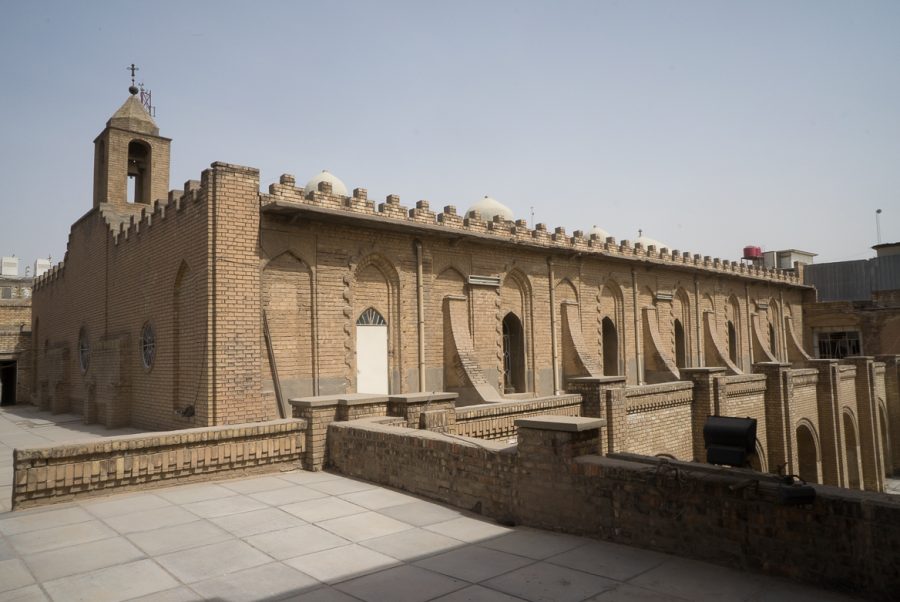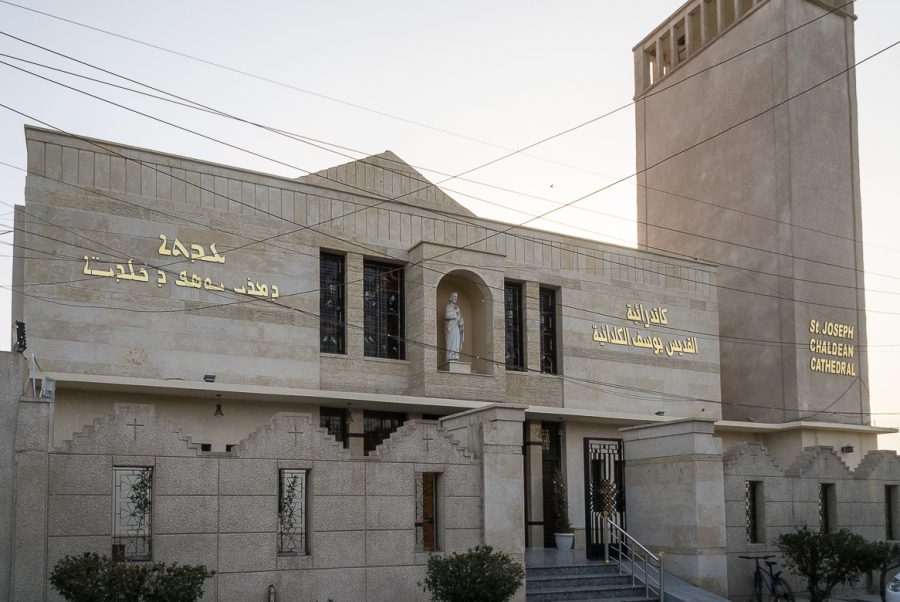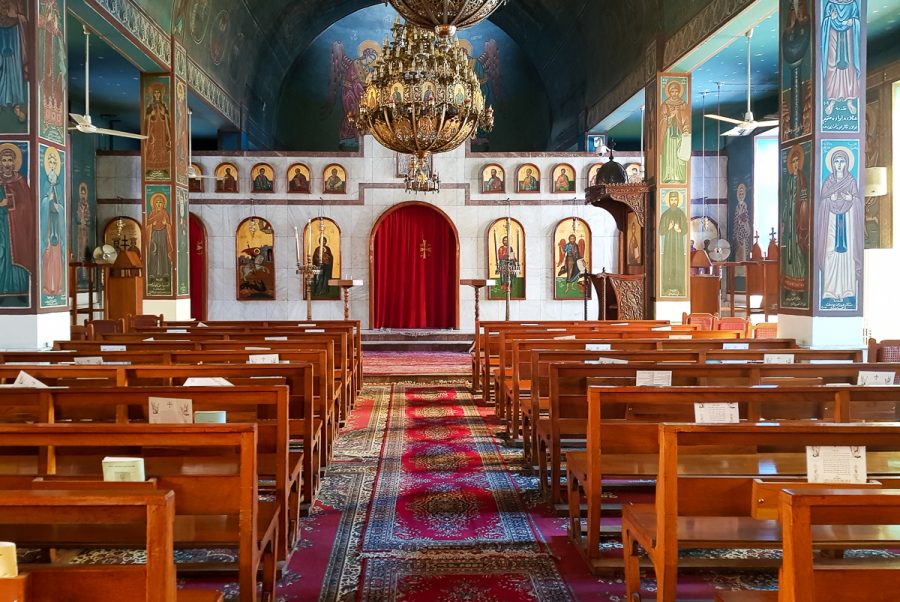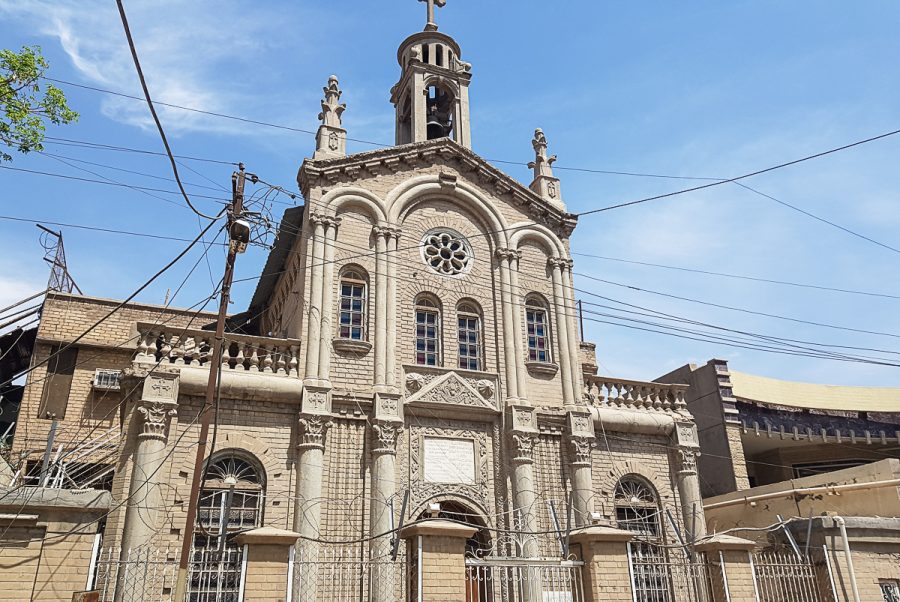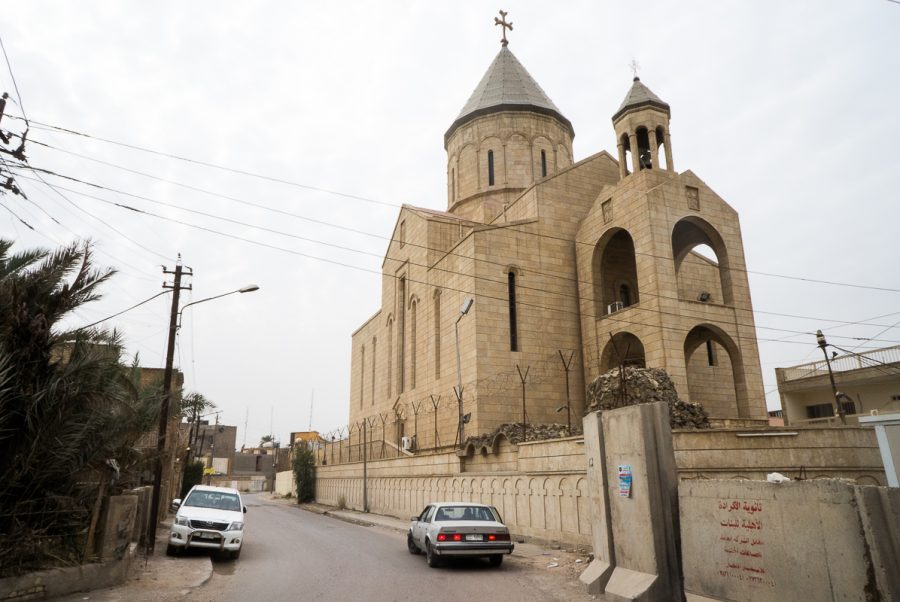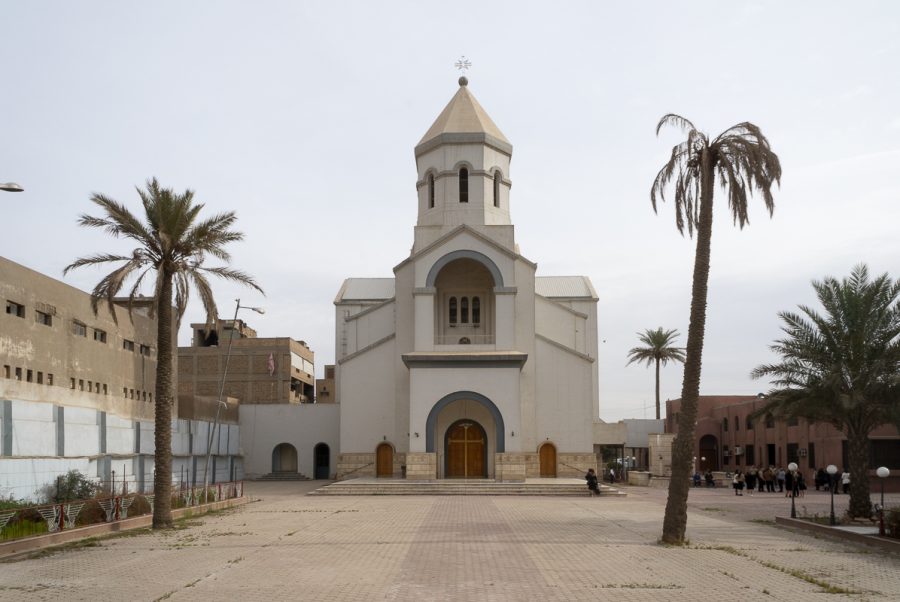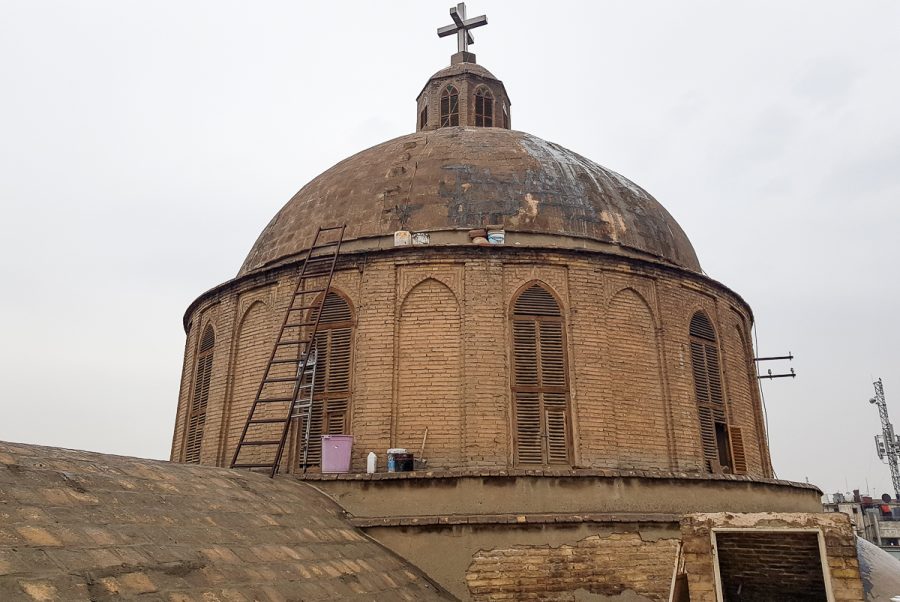The Chaldean our Lady Queen of the Rosary church in Baghdad
The Chaldean Our Lady Queen of the Rosary church is located at 33°17’36.94″N 44°25’9.99″E and 39 metres’ altitude in the Karada district, Kharidge street, close to the Al-Jadiriya hospital.
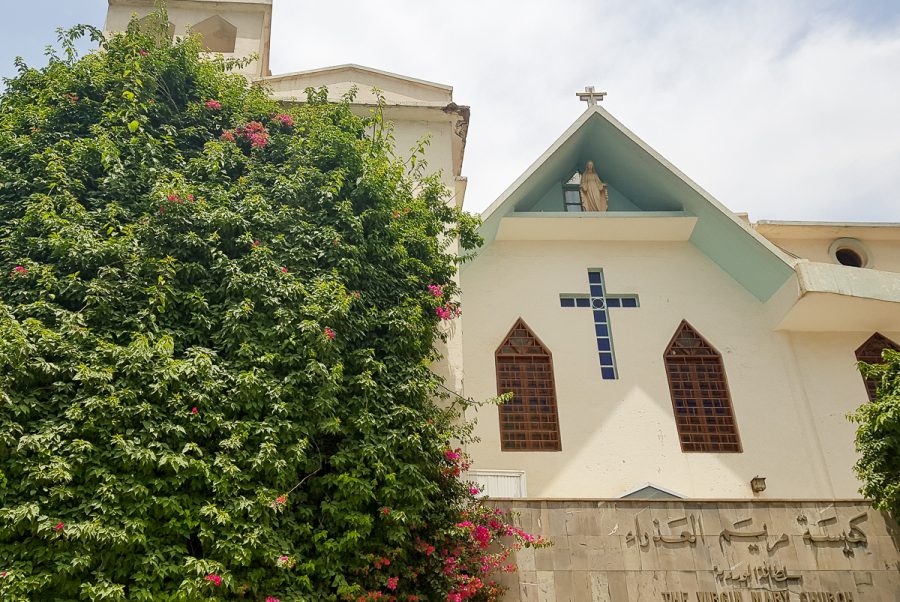
The Chaldean Our Lady Queen of the Rosary church in Baghdad was inaugurated in 1960. The church is also known as the church of Saint Rita, as a statue of the saint has stood in the church since 1962.
The building has a very original form of architecture. From the street we can see a high facade with a triangular pediment which contains a statute of the Virgin Mary. Perforated with a series of pointed arch windows, the church is mounted in the centre with a cupola with a cylindrical drum and eight clerestory windows, capped with a semi-spherical dome and lantern. An oratory containing a statue of Saint Rita is situated in the north side-aisle. Opposite, in the south side-aisle, is a statue of Saint Jean-Paul II.
| Pic : The Chaldean Our Lady Queen of the Rosary Church in Baghdad. April 2018 © Laith Basil Nalbandian / MESOPOTAMIA |
Location
The Chaldean Our Lady Queen of the Rosary church is located on the east bank of the Tigris where the river forms a wide meander. The building is located at 33°17’36.94″N 44°25’9.99″E and 39 metres’ altitude in the Karada district, Kharidge street, close to the Al-Jadiriya hospital.
The origins of the Chaldean church
The Chaldean Church is a Catholic church, born in the 16th century, further to a schism that occurred within the Church of the East. In 1552, several bishops, who had set up in northern Iraq, southern Turkey and northern Iran[1], contested the hereditary succession of the Catholicos of the Church of the East Shimun VIII. They elected in Mosul another Patriarch, Yohannan Sulaqa, abbot of Rabban Hormizd Monastery in Alqosh, who named himself Yohannan/John VIII and went to Rome to profess his Catholic faith. On 20th April 1553, Pope Julius III appointed him Patriarch of the Chaldean Catholic church “whose creation was thus officialised.”[2]
Back in the Ottoman Empire, he set up his patriarchate in Diyarbakır (southeast of modern-day Turkey), 400 kilometres northwest from the monastery of Rabban Hormizd. Fighting openly with his rival Shimun VIII, Yohannan Sulaqa was arrested, imprisoned and murdered in 1555.
The foundation of the Catholic Chaldean Church had been preceded a century earlier, in 1445, by a decree of union in Cyprus between Rome and some members of the Church of the East, that Pope Eugene IV already called “Chaldeans”.
Up until the 19th century, this schism was all the more conflictual as a large number of worshippers from the Church of the East chose to remain in communion with Rome.
The Catholic Chaldean Church’s see was transferred from Diyarbakır to Mosul in 1830, before the Metropolitan Yohannan VIII Hormizd was elected as Patriarch.
Though they undisputedly counted as the majority among the estimated 1,200,000 Christians in Iraq before the first Gulf war in 1991, the Chaldeans number 750,000 in the last census in 1987, compared to 300,000 Assyrians (Church of the East and former Church of East). The total number of Christian people in Iraq amounted then to 8% of the total population. How many were there in 2018? The data collected by MESOPOTAMIA’s correspondents confirms the demographic collapse reported by the communities visited. There are less than 400,000 Chaldeans in Iraq, living in Baghdad, Kurdistan, the Nineveh plain and Basra. The disasters faced by the Christian communities in Iraq have not ceased since its independence in 1933. There was no respite at the start of the 21st century with the American invasion in 2003 and the terrible sanctions imposed by the UN, along with the violence and persecution perpetrated by Islamicist and organised crime groups, targeting Christian communities since the fall of Saddam Hussein’s regime.
Today, the Chaldean church is composed of a large diaspora spread across five continents: the United States, Europe, Australia, Canada, New Zealand, and the former USSR, in particular in Russia (Moscow, Rostov-on-Don), Ukraine, Georgia (Tbilissi), Armenia (Yerevan).
_______
[1]In the 16th century, the Ottoman Empire and Persia.
[2] In “Histoire de l’Église de l’Orient”, Raymond Le Coz, Cerf, September 1995, p. 328
History of the Chaldean Our Lady Queen of the Rosary church in Baghdad
The Chaldean Our Lady Queen of the Rosary church in Baghdad was inaugurated in 1960. This church also goes by the name of Saint Rita whose statue has stood there since 1962 and a novena is prayed to Saint Rita every May, the month dedicated to the Virgin Mary.
Description of the Chaldean Our Lady Queen of the Rosary church in Baghdad
The Chaldean Our Lady Queen of the Rosary church was built by the architects and engineers Sami Hindi and Munther, under the supervision of Bahjate Raphaël Kotanie.
The building has a very original form of architecture. Viewed from the street we can see a high facade with a triangular pediment which contains a statute of the Virgin Mary. A square bell tower rises up several levels on the north side of the church and has a number of pointed arch openings.
Beyond the entrance gate, in the interior courtyard, there is an oratory dedicated to the Virgin Mary.
The church is entered via a simple wooden door aligned with the sanctuary, above which is a large tribune for the choir running the full width of the church.
The reinforced concrete building has a basilica floor plan with a central nave and two side aisles separated by three pairs of cylindrical pillars. Perforated with a series of pointed arch windows, the Chaldean Our Lady Queen of the Rosary church is mounted in the centre with a cupola with a cylindrical drum and eight clerestory windows, capped with a semi-spherical dome and lantern.
The fully open sanctuary is preceded with a platform equipped with lecterns. The royal door of the sanctuary is composed of three large semi-circular arches and two smaller decorative arches. Behind the altar, in the wall of the apse chapel is a small statue under a painting of the Virgin Mary, Queen of the Rosary, carrying the Infant King.
An oratory containing a statue of Saint Rita is situated in the north side-aisle. Opposite, in the south side-aisle, is a statue of Saint Jean-Paul II.
Monument's gallery
Monuments
Nearby
Help us preserve the monuments' memory
Family pictures, videos, records, share your documents to make the site live!
I contribute
